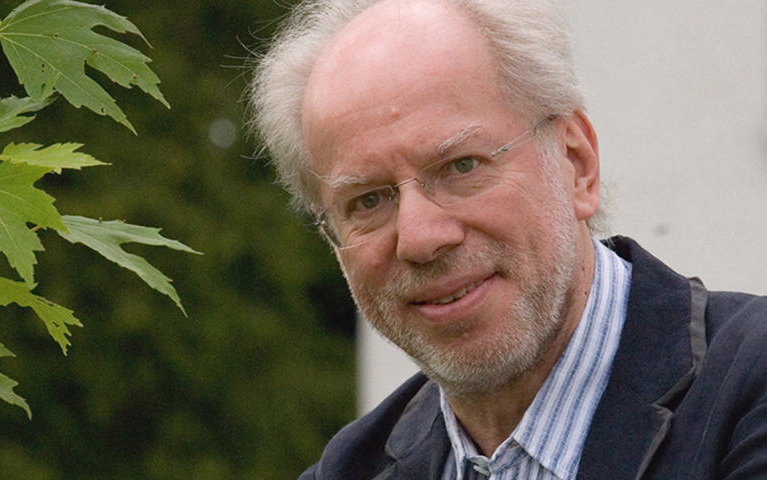Fine playing and odd presentation collide in Kremerata Baltica concert

Being the brainchild of the esteemed and omnivorous violinist Gidon Kremer, it’s no surprise that Kremerata Baltica shares its namesake’s adventurous ethos. Yet in its appearance Wednesday night at Symphony Center, the ensemble occasionally veered from adventurous to merely eccentric.
The string orchestra—whose 20th anniversary this year also coincides with Kremer’s 70th birthday—is comprised of young talent from the Baltics, and Wednesday’s rep choices were similarly eastward-facing. Even so the pieces’ shared Slavic origins didn’t make for a cohesive program, unaided by artistic decisions and shaky leadership.
The first misstep was the decision to pair Arvo Pärt’s Fratres (in the version for solo violin and strings) and Mieczysław Weinberg’s Chamber Symphony No. 4 on the first half of the program. Being quintessentially Pärt, much of Fratres is a waiting game—the piece is essentially one long crescendo over a repetitive formula of percussive interludes, solo violin lines, and chant-like homophony in the strings. It was a hard sell for a concert opener, made even harder by Kremer’s restraint; though the solo violin lines ornament the harmonic trajectory of the piece, Kremer failed to make a case for the necessity of the solo part.
For Weinberg’s clarinet-centric chamber symphony, Kremer ceded the stage to Slovenian clarinetist Mate Bekavac, who led the ensemble from a seat in the center of the orchestra. The symphony’s meandering, dark ruminations often channel Shostakovich’s tense Tenth Symphony, though moments of release are fewer and farther between. Though the Kremerata made a strong case for the work with impeccable dynamic control and fine solos in the principal strings, following meditation with more meditation made for an unvaried and somewhat dull first half. When the energy level did spike—as in the blazing second-movement Allegro molto—the result was like a much-needed splash of cold water to the face.
In terms of stage presence, the Kremerata’s leaders were polar opposites: where Kremer was too deferential, Bekavac was often overly emphatic. Brashly swinging around from side to side and half-conducting, his eccentric stage presence distracted from his otherwise impressive playing, including an extended, acrobatic cadenza in the fourth movement.
In the second half of the concert, the Kremerata decided to amp up the drama—or so it thought—by playing the final three pieces attacca. After an unidiomatically reserved interpretation of Tchaikovsky’s soulful Sérénade mélancholique, in what had to be the most bizarre moment of the evening, Kremer simply walked offstage while sustaining the final note. He could still be heard when the ensemble came swinging in with the opening “Promenade” from Mussorgsky’s Pictures from an Exhibition, in an arrangement for string orchestra and percussion by Andrei Pushkarev and Jacques Cohen. When he returned for Valentin Silvestrov’s Serenade for Solo Violin, the lingering brilliance of “The Great Gate of Kiev” still resounding through Orchestra Hall, the lights dimmed, illuminating Kremer alone. Overdone theatrics are one thing—the real sin here was that these three pieces cover so much musical territory that cramming them together was simply tasteless.
Luckily, Kremer’s final solo turn was a highlight that played to his best sensibilities. The Serenade is at once unapologetically folkish and Bach-like, and Kremer thrived in the dance between the two, his interpretation here finally both introspective and articulate.
For all the oddities and inconsistencies of Wednesday’s concert, the biggest takeaway was that the ensemble musicians themselves are superb. Tightly unified, there were moments throughout the night when each section sounded like one instrument. Each member was honed in to the character and sensibilities of each phrase, imbuing Fratres with airy ethereality and Sérénade mélancholique with heart-aching sweetness.
In what was far and away the highlight of the evening, the kaleidoscopic Pictures saw the ensemble at their most versatile, bringing the multi-movement suite’s colors to vivid, pulsing life. Though Pushkarev and Cohen are no Ravel, their arrangement yielded plenty of delights: just a few include the decision to set the second-movement troubadour theme as a duet between violin and cello; a rhythmically-taut, pared-down “Market Place at Limoges”; and a wonderfully weird setting of “Baba Yaga” that prominently featured a vibraslap.
The evening’s two brief encores kept in line with the evening’s themes of stark contrast and popular appeal. Kremer played Latvian composer Georgs Pelēcis’s plaintive All in the Past over a simple accompaniment, but cheekily—if kitschily—omitted the final resolution. Russian pianist-composer-conductor Mikhail Pletnev’s Nach dem Weinbergsteig, an homage to Weinberg, followed. After a dissonant unaccompanied intro, the piece sparks into a sprightly, schmaltzy dance—another decidedly populist offering, but one that brought the house down for the many Eastern Europeans in the audience.
Posted in Performances





Posted Feb 09, 2017 at 12:18 pm by Stan
very nice review